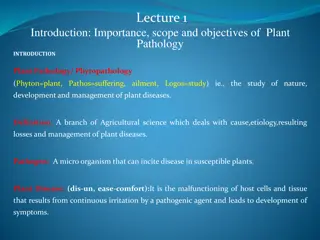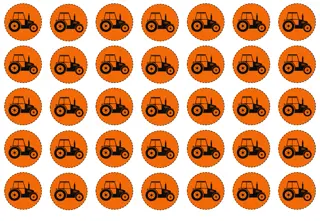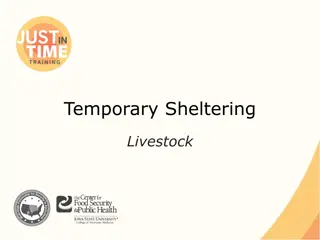Sheltering in Place: Staying Plant Strong with Fiber
In this insightful piece, Debbie Lucus, a registered dietitian, shares tips on staying healthy and resilient during challenging times. She discusses pantry essentials, kitchen stocking ideas, meal inspirations, and ways to boost immunity through plant-based nutrition and holistic practices.
Uploaded on Oct 04, 2024 | 0 Views
Download Presentation

Please find below an Image/Link to download the presentation.
The content on the website is provided AS IS for your information and personal use only. It may not be sold, licensed, or shared on other websites without obtaining consent from the author.If you encounter any issues during the download, it is possible that the publisher has removed the file from their server.
You are allowed to download the files provided on this website for personal or commercial use, subject to the condition that they are used lawfully. All files are the property of their respective owners.
The content on the website is provided AS IS for your information and personal use only. It may not be sold, licensed, or shared on other websites without obtaining consent from the author.
E N D
Presentation Transcript
Sheltering in Place and staying plant strong with Fiber Debbie Lucus, MS, RD, CDE 04.07.20 dlucusrd@gmail.com
What a crazy world it is. What a change!! Who knew we would be waiting in line for toilet paper How are you handling this brave new world? Some things I m doing Puzzles! Reading! Trying to limit the TV Staying in touch with Zoom Walking, taking advantage of lots of non gym workouts Throwing meals together with whatever is in my cupboard Cleaning out cupboards and closets Catching up on podcasts Watching Vegan cooking YouTubes: Try Jane & Ann Esselstyn s
Stocking your kitchen - Pantry Beans Add to soups & stews Use in salads, side dishes, even desserts Dried seem to be more available and save you $$$ Lentils Soup, salads, bowls Whole grains most are interchangeable Barley, millet, brown rice, couscous, quinoa, etc. Potatoes, onions, garlic The base of most recipes
More pantry items/canned goods Beans Low Sodium Canned tomatoes All shapes and sizes Sun-dried tomatoes Plant-based milks Pastas Oats, cereals Nuts/seeds
Stocking the kitchen Frig/Freezer Fruits Citrus, apples last a long time Bananas freeze them as they get too brown Frozen fruit Veggies Winter squash last all season Greens Carrots, celery Frozen veggies
Meal ideas Youve been training for this! Batch cooking Buddha bowls Smoothies Cook up pot of beans and a grain use them all week Try new recipes Watch those cooking videos on YouTube Get a cookbook and cook your way through it!
Build your Immunity Eating whole food, plant based Full of disease-fighting nutrients Move your body Stress less Yoga Meditation Prayer Social distancing yet stay connected Get enough sleep
What is Fiber? Indigestible part of plants Fruits & veggies Beans, lentils, & peas Nuts & seeds Whole wheat bread/pasta Wild/brown rice Barley, bulgur, quinoa, Israeli couscous & farro Bran, wheat, & oats Two types of fiber: Insoluble Soluble
Benefits of Fiber Lowers cholesterol (soluble) Reduces constipation, hemorrhoids (insoluble) Increases feeling of fullness (helps with weight loss) Slows blood sugar rise (helps with diabetes) Food for good bacteria in gut helps microbiome Lowers risk of some cancers Colon (decreases transit time, breaks down to butyrate in colon inhibits tumor growth) Breast (binds to estrogen) Prostate Mouth, esophageal, throat
How much fiber do you need? Depends on who you ask RDA 21-25 grams/day for women 30-38 grams/day for men American Cancer Society 25-35+ grams per day Try for 15 grams/meal Some encourage as much as 50 grams daily Average American eats 10-15 grams!
What is an Intact Whole Grain? Hierarchy of whole grains: Intact whole grain (i.e. oat groats, quinoa, barley) Broken Whole grains (i.e. bulgur) Rolled Whole Grains (oatmeal) Shredded Whole Grains (shredded wheat) Ground Whole grains (whole wheat flour) Flaked Whole Grains (flaked cereals) Puffed Whole Grains (puffed cereals)
Insoluble Fiber Benefits G.I. health Travels through the digestive tract & creates bulk Helps the colon function properly Sources Whole grains (wheat) Fruit Vegetables Beans, lentils, peas Nuts and seeds
Soluble Fiber Benefits Dissolves into a gel-like substance in the intestines Blocks cholesterol from being absorbed from intestines into blood stream Sources Oats (oatmeal, Oat Bran) Beans, barley Citrus fruits (orange, grapefruit) Pears Psyllium - Metamucil
High fiber meal plan - Breakfast Whole-grain cereal or oatmeal (5-10 grams of fiber) Topped with cup blueberries (2 grams of fiber) 1 Tablespoon flax seeds (2 grams fiber) Plant milk (1 gram fiber)
High fiber meal plan - Lunch Sandwich: 2 Tablespoons Hummus (2 grams fiber) 2 slices of whole wheat bread (6 grams fiber) Lots of lettuce, cucumber and tomato (2 grams fiber) Orange (3 grams fiber)
High fiber meal plan - Dinner Grilled tofu On salad made with romaine lettuce and carrots/cucumber/mushrooms/tomatoes (5 grams of fiber) Half a cup of cooked roasted sweet potato (3 grams of fiber) Half a cup of lentils (7.5 grams of fiber) 1/8 Avocado (2 grams fiber)
High fiber meal plan - Snacks Morning snack: quarter cup of raisins (1.5 grams of fiber) Afternoon snack: half a cup of blueberries (2 grams of fiber) After-dinner treat: 3 cups popped popcorn (3.5 grams of fiber)
Daily fiber intake Breakfast: 13 g Lunch: 13 g Dinner: 17 g Snacks: 7 g Total: 50 grams!!!!
Plan ahead for fiber-rich meals: Batch cook Hot cereal for breakfast High fiber waffles/pancakes Grains & protein for power bowls: lentils/beans; quinoa/brown rice/barley; Grilled or roasted veggies Pre-chop greens for salads or bowls to eat raw or cook Soups with beans &/or grains & lots of veggies
High Fiber Meal Guidelines Bottom Line 25 Lots more vegetables & greens Fruit and/or vegetable with every meal and snack Whole grains--dump refined grains Eat beans (legumes) every day Add 1 Tbsp nuts daily Cut out the processed foods, don t eat junk! Only purchase whole grains that have 5 grams fiber per serving or more (especially cereal, bread, pasta, rice, other grains)
Adding Fiber Eat fruit and/or vegetables with EVERY meal Start dinner with a salad or vegetable soup. Eat another vegetable with dinner. Have beans every day Add beans or lentils to salads, pastas, soups, bowls Choose intact whole grains
Beans are a member of the legume family. LEGUMES SOY BEANS BEANS LENTILS PEAS PEANUTS Black Beans Kidney Beans Navy Beans Pinto Beans
Low GI foods like beans increase blood sugar slowly.
Reading Nutrition Labels 31 GUIDE PER FOOD LABEL Serving Size Limit total fat - <5 grams/serving Limit saturated fat - low as possible Avoid trans fats - 0 grams Limit added sugar - <5 grams/serving Limit sodium 500 mg per meal max Choose fiber 5+ grams/serving
Beans and Lentils 32 Benefits: High in antioxidants Source of protein High in iron, zinc, folate High in fiber Add to soups, salads, bowls, and whole grain dishes Canned beans are okay buy low sodium
Sorghum Whole grain cereal Similar to barley or wheat/rye berries Grows in stalks like corn Grains/kernels eaten as whole grain or cooked into syrup Gluten free Cooked 1 part grain to 2 parts fluid Can pop like popcorn Sprout Turn into mush






























